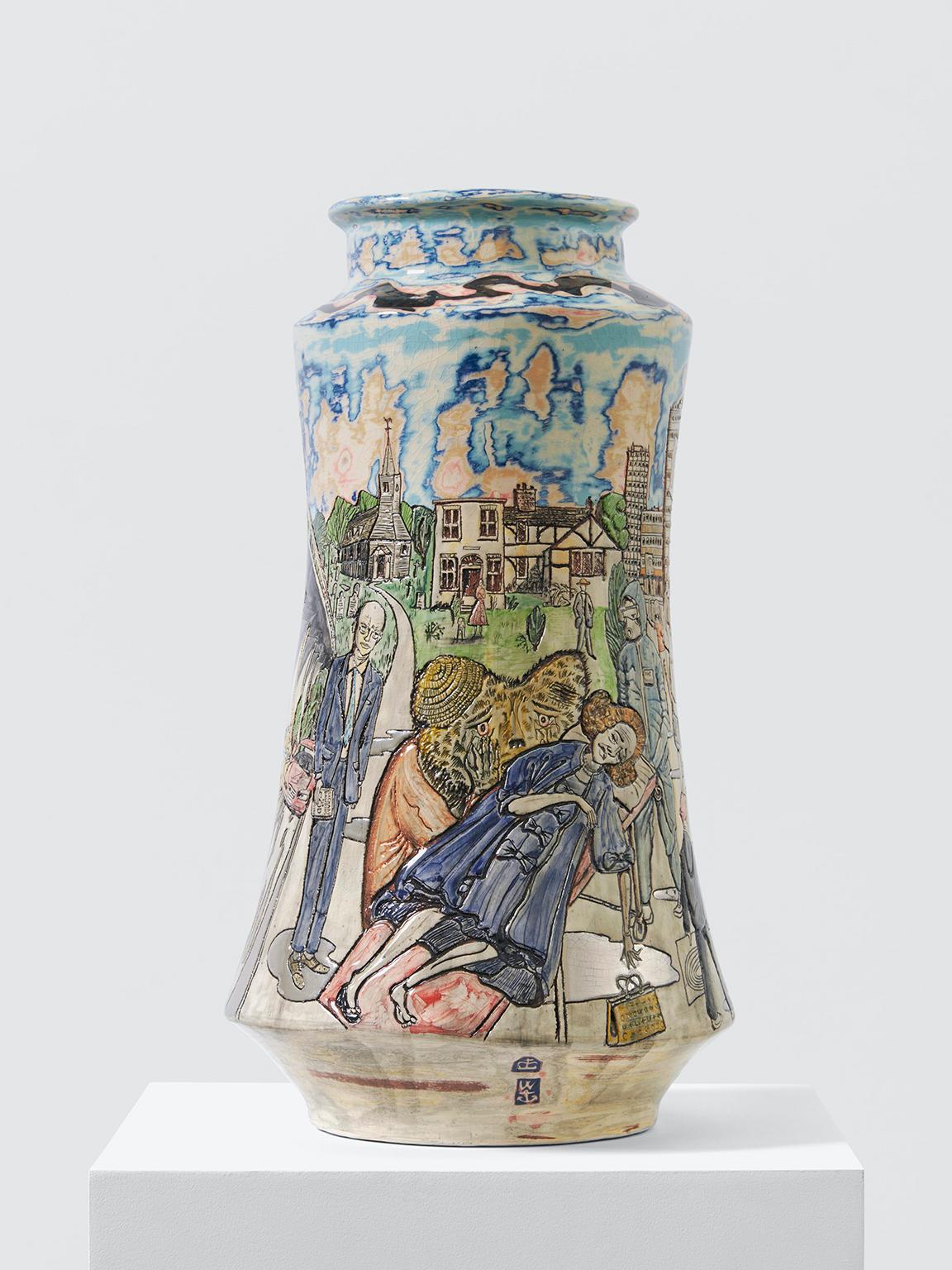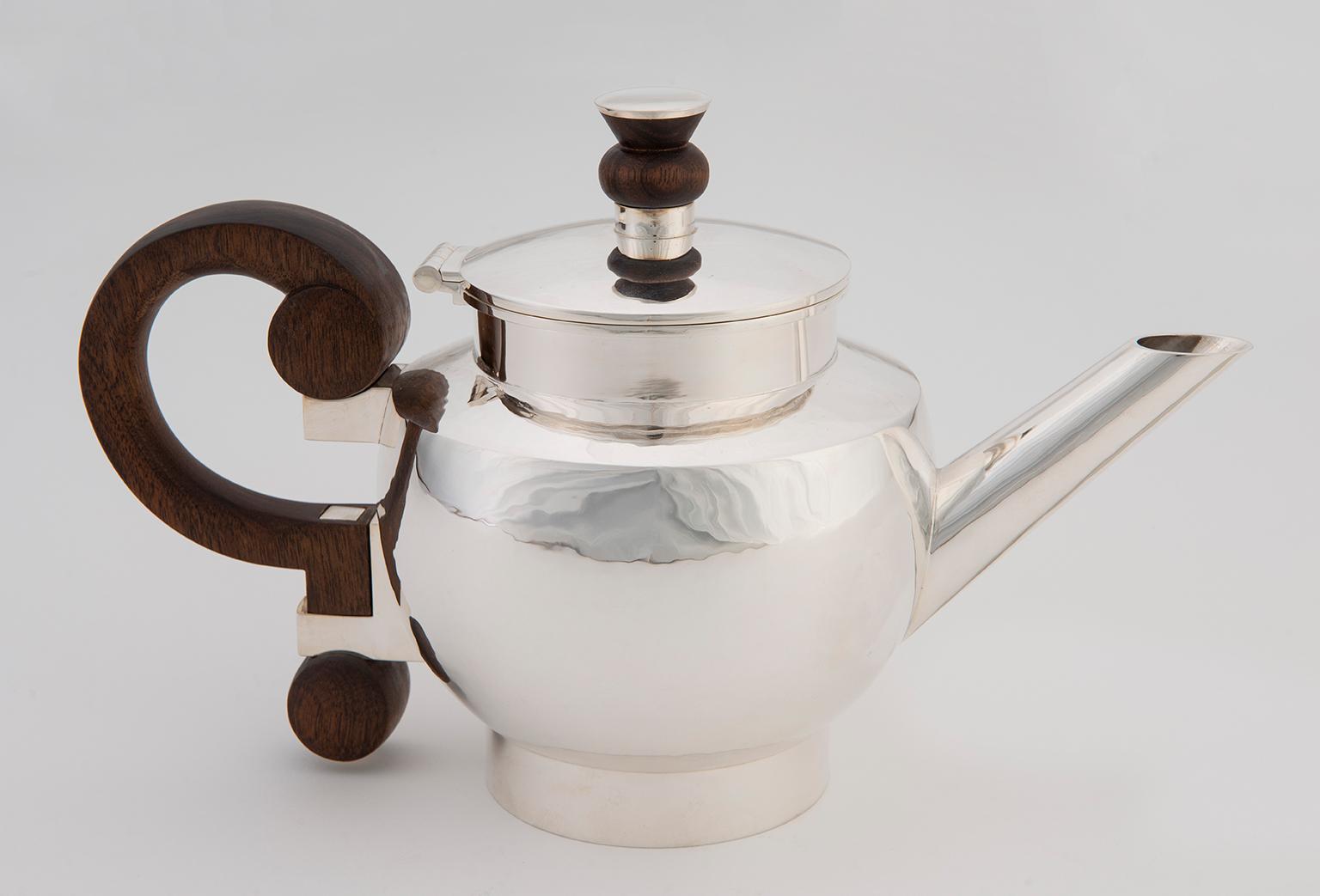Art you’ve helped support: April highlights

Every month we spotlight a few works of art that we've been able to help museums add to their collections recently, thanks to your support. Here's this month's picks – from Grayson Perry’s Covid-19 medicine jar to Ibrahim Mahama’s recycled wall-hanging.
It’s thanks to Art Fund members and donors that we're able to support museums across the UK, helping them to buy and share works of art and get exciting new projects off the ground.
This month, artists take humble household and found objects and elevate them to create decorative gems – from a pot in the style of a medicine jar exploring the early months of the Covid-19 pandemic, to a curious silver teapot.
Take a look below. And don’t forget, you’ll get great benefits when you visit with a National Art Pass.
An illustrated medicine jar
Made as part of his Channel 4 series Grayson’s Art Club, which was broadcast during the first lockdown in spring 2020, Grayson Perry's Alan Measles – God in the time of Covid-19 is a glazed ceramic work in the form of a medicine jar, decorated with Perry's 'fears and imaginings' about the experience of living through the early months of the Covid-19 pandemic.
In one prominent scene, the artist's teddy bear, Alan Measles, is shown weeping as Perry's alter ego, Claire, is pushed on a hospital trolley by a worker dressed in PPE. Observing this scene is Professor Chris Whitty, the UK's chief medical officer (pictured top).
Alan Measles – God in the time of Covid-19 joins the collection at the Science Museum, London, and is due to go on display in the Medicine: The Wellcome Galleries. It has been collected alongside other Covid-related artefacts such as the first vaccines developed and public-health signage.

A quirky silver teapot
Big Question Teapot is a distinctive piece by renowned Scottish designer and silversmith Graham Stewart, known for his innovative, clean-lined sculptural pieces including jugs, bowls and presentation objects.
This contemporary work is made in hammered silver with a walnut handle. Its shape is inspired by historic bullet-form teapots of the 18th century and its handle reflects Stewart's singular approach to design.
Big Question Teapot joins a lovely collection of 24 silver teapots at Aberdeen Art Gallery, dating from the early 18th century to 2012.

A lavish hand-painted plate
This extremely rare plate is attributed to the Pisa workshop of Niccolò Sisti, a notable Italian maker of glassware and ceramics in the service of the Medici family, who ruled Tuscany at the time of its creation in the late 16th, early-17th century.
The plate is likely to have been a one-off commission, possibly ordered by William Dethick (whose family arms feature at its centre), but more likely a diplomatic gift from someone in the Medici court, perhaps even the Grand Duke of Tuscany himself. It features intricate hand-painted details including half-human creatures, sphinxes, snails and insects.
This beautiful piece joins the internationally renowned collection of maiolica (tin-glazed pottery on a white background) at the Ashmolean Museum in Oxford.

A striking recycled wall-hanging
This work by Ibrahim Mahama brings together recycled materials salvaged from the commerce and industry of Ghana.
Named ODO NTI NA ME SU, which itself is recycled from the lyrics of Ghanaian musician Amakye Dede (or Iron Boy), it incorporates an oily and creased tarpaulin from a market in Accra, jute sacks originally imported from South Asia, and metal tags salvaged from the cocoa industry.
Mahama is particularly known for incorporating the detritus of Ghanaian industry in his work, as well as items that reference the British colonial rule of his homeland.
ODO NTI NA ME SU joins the collection at the Whitworth in Manchester as part of an ongoing commitment to collect works of art that raise questions about capitalism and colonialism.

Membership gives back: The National Art Pass helps museums to buy and share works of art for everyone to enjoy, as well as run exciting projects that connect more people with art. Find out more.
Pictured top: Grayson Perry, Alan Measles - God in the time of Covid 19 (detail), 2020, Science Museum, Art Funded 2021, © Grayson Perry. Courtesy the artist and Victoria Miro. Photo: Science Museum Group.Descriptions of objects featured in this article are based on content compiled by Marcus Field for Art Quarterly magazine, where you can find out more about works of art you've helped support.